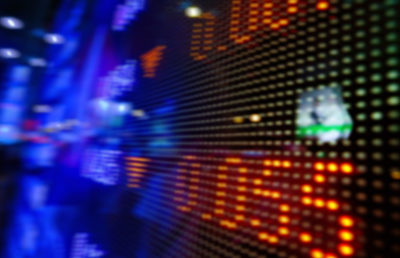Relative household stock holdings have risen to heights not seen since the dot-com bubble — casting a light on the interplay of subclasses in the investment pool.
The Federal Reserve publishes a series of intriguing statistics on U.S. households’ balance sheets. A recent Fed survey reported that stocks held by households and nonprofit organizations as a percentage of their total financial assets has jumped to nearly an all-time high — a level last seen right before the dot-com bubble burst in 2000.
Economist Dana Lyons, a partner at Deerfield, Illinois–based J. Lyons Fund Management, argued in an October 2018 blog post that households’ growing equity holdings have been an effective tool for predicting large market downturns; he believes rising household investing is evidence of excessive investor optimism. The ratio of U.S. stock holdings to total financial assets peaked in 1968, 1972, 2000 and 2007, and in each case was followed by extended periods of price declines. Joseph Carson, former global director of economic research at money management firm AllianceBernstein, wrote on Bloomberg.com in January 2018 that these tendencies toward late entry and bad timing have led Wall Street to dub household investments, somewhat pejoratively, as “dumb money.” Carson warned that the dumb money was about to become “very influential.”
Lyons highlighted the Fed survey on household equity holdings for the third quarter of 2017, when the ratio of stocks to total financial assets stood at 36.3 percent — an elevated level compared with the low of 10.9 percent in 1982 and not far below the 42 percent of 2000. The most recent release, for the second quarter of 2018, indicated an even higher level. Given the past relationship of household stock holdings to equity returns, it is not surprising that the recent numbers have raised concerns. To understand the effect of this on financial markets, however, you need to understand what’s going on beneath the surface.
That’s where market microstructure comes in. The field of market microstructure — the analysis of the behavior of subclasses in the investor pool and their effect on asset prices — provides convincing theories and important empirical findings on these underlying factors. The knowledge that has been gathered on this topic since its appearance in the 1980s helps investors understand how changes in market structure affect asset returns. A key element of microstructure theories, the distinction between informed and uninformed trading, serves as the spine of this article, providing a theoretical understanding of how these subclasses shape asset prices.
Diminishing Transaction Costs
A large decline in trading costs is an important factor behind shifting investment patterns. Trading costs, which constitute primary factors in performance, include commissions on buying and selling shares and bid-ask spreads (the gap between the highest bid and lowest ask prices in a given stock trade). To calculate annual trading costs, you multiply the half-spread plus the commission by the annual turnover; this aggregate annual number has been gradually decreasing. According to Charles Jones, a professor of finance and economics at Columbia Business School who tracked those costs historically, spreads fluctuated widely over the 20th century, driven mainly by extended episodes of market turmoil, such as the Great Depression and the energy crisis in the 1970s. In recent decades, however, spreads have followed a continuous trend and gradually declined, from an average of 1.5 percent in the 1930s to 0.2 percent in the 2000s on Dow Jones Industrial Average stocks.
By contrast, commissions have traced a different history, shaped more by regulation than by market dynamics. Until May 1, 1975, U.S. exchanges set relatively high minimum commissions that were almost always binding. In line with stricter regulatory policies that began after the Great Depression, commissions increased gradually; by the mid-1960s, a small trade on an average New York Stock Exchange stock could involve almost 1 percent as commission. Following the 1975 deregulation, however, commissions began sharply declining, dipping below 0.2 percent by the late 1990s and falling further from there; nowadays discount brokers may charge very marginal commissions below 0.01 percent.
Lower costs attracted more money and trading volume to equity markets. As a result, liquidity increased from mid–20th century levels. According to Jones, the average annual share turnover of NYSE stocks quadrupled over the second half of the century.
This shift in transaction costs took place along with other trends that increased liquidity. As James Poterba, an economics professor at Massachusetts Institute of Technology, found, households significantly increased their equity holdings during the 1990s. Retail investors in particular channeled sizable indirect inflows into equity mutual funds, mainly through the growth of defined contribution and other retirement plans. In this period, direct stock ownership rose from 17 percent to 21 percent of households’ financial assets, while their indirect holdings through mutual funds jumped from 32 percent to 53 percent.
These trends slowed in the decade after the dot-com era, only to regain momentum in recent years. With the advent of low-cost brokerage services, robo-advisers and wider access to markets, trading conditions improved further, eventually leading to stronger-than-ever competition to gain investor money.
This race among service providers is reflected in what CNBC called a battle for low-fee supremacy. In August 2018, Fidelity Investments launched the first index funds that charge no management fees. Vanguard Group, the largest provider of mutual funds, opened an upgraded brokerage site that allows trading of a wide range of exchange-traded funds free of charge.
Dynamics of Market Structure
The evolution of spreads and commissions occurred hand in hand with a shifting market microstructure. Academic literature on microstructure has long revealed a strong correlation between spreads and the relative size of informed trading in capital markets.
One well-known measure that captures this relationship is the probability of informed trading (PIN), introduced by Cornell University professors David Easley and Maureen O’Hara and Copenhagen Business School’s Søren Hvidkjaer. According to their 2002 article — one of the most-cited papers on market microstructure — an increase in the number of retail traders decreases the relative size of informed trading, which in turn produces tighter spreads because market makers feel that they are less exposed to fundamental risk. In other words, specialists setting the range of bid-ask spreads tend to lose only against informed traders, who are relatively more skilled at detecting permanent changes in fundamental stock values. Therefore, the more specialists interact with informed traders, the likelier the chance that they set wider spreads to compensate for expected losses.
Moreover, in extended periods of low informed trading, lower commissions and tighter spreads may attract even more investors, creating a feedback loop. As a result, regardless of which direction is more significant in the causality between the ratio of informed traders and trading spreads, we see a positive relationship between liquidity and uninformed trading. This co-movement of the time series has been documented in studies using various frameworks and settings. In another article, Easley and O’Hara, along with Marcos López de Prado, the head of machine learning at AQR Capital Management, argue that the “flash crash” of May 6, 2010, was a good example of such patterns. In their results, they use the volume-synchronized probability of informed trading (VPIN) and measure the ramp-up of informed trading that caused liquidity providers to leave the market; this was already noticeable at least a week before the episode and reached its highest level in the history of the E-mini S&P 500 contract just before the sudden collapse.
Canisius College professor Yuxing Yan and Hong Kong Polytechnic University’s Shaojan Zhang measured PIN with a higher quarterly frequency between 1993 and 2004. Similar to VPIN results around the flash crash, the authors find support for the predictive capability of market microstructure and document the largest drop in the average PIN in more than a decade during the first quarter of 2000, just before the dot-com bubble burst.
These microstructure patterns preceding market crashes are not surprising considering the following chain of events: In periods of elevated enthusiasm for stocks, households provide higher inflows. The so-called dumb money attracts informed traders to exploit emerging arbitrage opportunities, and the ratio of informed trading increases. As a consequence, market-making specialists start to increase the gap between bid and ask prices to cover expected losses against informed traders. The spreads keep increasing to the point that liquidity dries up, demand and supply move out of balance and a market correction occurs. Then the cycle begins again.
Shrinking Market Frictions
In recent decades, a change has occurred that may be even more important than lowered obstacles (or reduced frictions) to market access. As a consequence of lower trading costs, financial markets have seen a significant decline in risk premiums. According to Jones, the equity premium fell in the first half of the 20th century; this was in line with the decreasing average share turnover and flat or rising commissions. Jones’s analysis ends before the dot-com era, but a recent study by Duke University professors John Graham and Campbell Harvey, who have been surveying U.S. chief financial officers since 2000, shows similar patterns. The ten-year expectations for annualized S&P 500 returns have seen a sharp decline in the past two decades, from more than 10 percent in 2000 to about 6 percent in 2017.
Aggregate returns are not the only statistics reflecting changes in trading conditions. In contrast to households’ increased appetite for equities, which implies less rational trading and more predictable patterns, prices have grown more efficient — that is, they contain more information and react to change more quickly. According to professors Tarun Chordia, Avanidhar Subrahmanyam and Qing Tong of, respectively, Emory University, UCLA Anderson School of Management and Singapore Management University, increased hedge fund presence, short interest and aggregate share turnover have led to less predictable patterns. The authors analyze the temporal change of abnormal profits made on 11 well-known anomaly strategies — portfolios that provide excess returns without betting on known risk factors — and find that anomaly profits, although still significant, have declined in previous decades. More important, they argue that decreasing market frictions help explain this pattern.
In addition, the literature on this topic has provided further evidence of shrinking anomaly profits and thus increasing market efficiency in U.S. and non-U.S. markets. Daniel Cajueiro, professor at Universidade Católica de Brasilia, and Benjamin Tabak, a researcher at the Central Bank of Brazil, have documented similar patterns in a wide range of emerging markets. They show that for the overwhelming majority of countries, time-series predictability of returns has decreased significantly and converged toward random noise.
All these findings suggest why such anomalies can exist in the first place. According to Harvard University professor Andrei Shleifer and the University of Chicago’s Robert Vishny, frictions have always been present in capital markets, giving rise to anomaly-like price patterns. However, these patterns are not tradable in themselves because of transaction costs, flaws in information acquisition or other kinds of friction. Nevertheless, if these “limits to arbitrage” are relaxed, previously significant patterns start to fade.
Conclusion
Market microstructure theory positing a positive relationship between uninformed trading and liquidity has been supported by evidence over the previous century and in recent decades. Decreasing market frictions (such as trading costs, illiquidity and information asymmetry) occurred hand in hand with households’ increased participation in stock trading. As a result, the stock market grew more sensitive to households’ investment decisions. In the meantime, anomaly profits have declined as arbitrage barriers have gradually been reduced, thus making capital markets more efficient. The money inflows from households became a primary factor in trading profits due to the shrinking magnitude of those arbitrage barriers. That’s why the numbers in the latest Fed survey on households’ elevated equity holdings are so important.
The effect this rising household stake will have on financial markets remains obscure for now. Either we will see a sharp drop in household inflows along with declining equity prices or the market will adapt to a new regime with elevated retail participation and low trading costs. Whichever happens, one thing is sure: Competition among investors is not going to decrease, and hence they will have to fight for their profits harder than ever, making the markets even more efficient.
Dusan Timotity is a Vice President, Value Addition Group, at WorldQuant and has a PhD in financial modeling from Budapest University of Technology and Economics.




